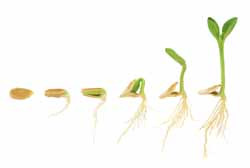New insights into seed dormancy cycling
Seed dormancy can be broken through species-specific methods like air-dry storage at room temperature or moist chilling. If conditions are favourable, the seeds will germinate, but if not they can re-enter dormancy. This process is known as dormancy cycling, and though it is both economically and environmentally important, it is not well-understood. The EU-funded 'Alternative splicing of NADPH-oxidases as a mechanism for seed dormancy regulation' (ARSEEDAS) project linked seed biology experts from Canada, Germany and the United Kingdom to shed some light on the issue. Researchers studied the role of reactive oxygen species, and the enzymes that produce them, during the transition from dormancy to germination and early growth. They also advanced new laboratory protocols, including a method to study water uptake in small seeds using magnetic resonance imaging. A major finding was that histones (the proteins that package DNA tightly within the nucleus) are modified in response to environmental conditions (epigenetic regulation). This affects the expression of plant hormone genes, even in distantly related species, so researchers now consider it a key plant life-cycle process. These new insights have contributed to a growing body of knowledge about seed dormancy and germination, which occurs in many important crops and trees. As such, this research will inform future developments in agriculture, forestry and plant conservation efforts.



